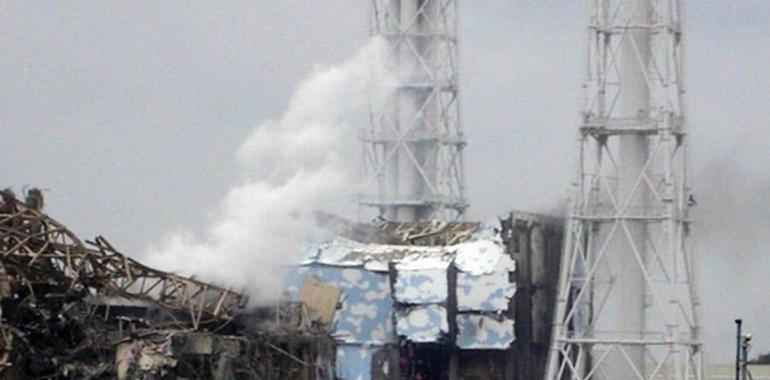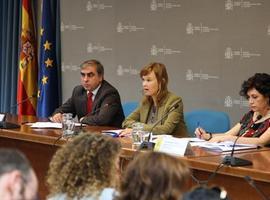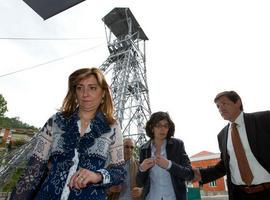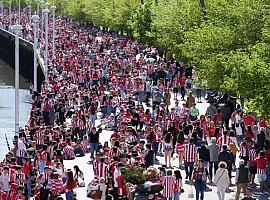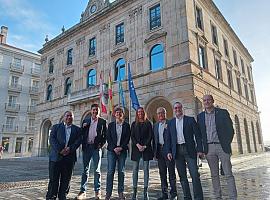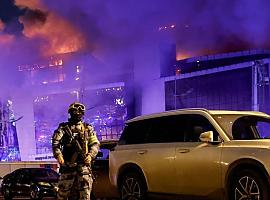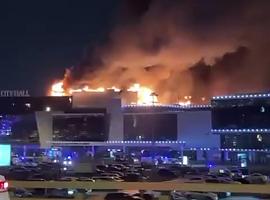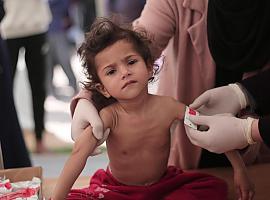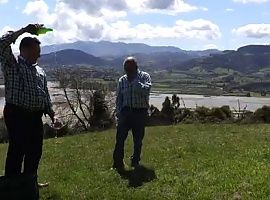La situación en la planta nuclear japonesa Fukushima Daiichi continúa siendo grave, afirmó hoy el subdirector del Organismo Internacional de Energía Atómica (OIEA).
Denis Flory actualizó a la prensa en Viena sobre la situación en la planta siniestrada.
“El 17 y el 18 de abril se utilizó un robot para inspeccionar los edificios de los reactores, y pudo verificarse que aún se observaba humo blanco proveniente de las unidades 2, 3 y 4”, dijo Flory.
El funcionario del OIEA destacó, por otro lado, los esfuerzos de la compañía que opera la planta y su anuncio de una hoja de ruta para paliar los daños del accidente.
El plan incluye 63 medidas que se aplicarán en un periodo de 6 a 9 meses.
IAEA Briefing on Fukushima Nuclear Accident (19 April 2011, 18.00 UTC)
Presentation:
1. Current Situation
Overall, the situation at the Fukushima Daiichi nuclear power plant remains very serious but there are early signs of recovery in some functions, such as electrical power and instrumentation.
On 17th April, the Ministry of Economy, Trade and Industry (METI) announced that TEPCO had issued a "Roadmap towards Restoration from the Accident at the Fukushima Daiichi Nuclear Power Station". The roadmap outlines 63 measures to be taken in two steps over a period of six to nine months.
Changes to Fukushima Daiichi Plant Status
The IAEA receives information from a variety of official Japanese sources through the nation's national competent authority, the Nuclear and Industrial Safety Agency. Additional detail is provided in the IEC status summary with information received by 07:00 UTC on 19th April 2011.
TEPCO has provided a plan to NISA for the transfer of highly contaminated water from the basement floor of the turbine building of Unit 2 to the Main Building of the Radioactive Waste Treatment Facilities in order to reduce the risk of this stagnant waste water being discharged to the environment.
On 17th and 18th April, an unmanned robot was used to conduct inspections of the Reactor Buildings in Units 1,
As of 18th April, white smoke was still observed coming from Units 2, 3 and 4.
In Unit 1 , fresh water is being continuously injected into the RPV through the feed-water line at an indicated flow rate of 6 m3/h using a temporary electric pump with off-site power. In Units 2 and 3, fresh water is being continuously injected through the fire extinguisher lines at an indicated rate of 7 m3/h using temporary electric pumps with off-site power.
RPV temperatures remain above cold shutdown conditions in all Units. In Unit 1 the temperature at the feed water nozzle of the RPV is 170°C and at the bottom of the RPV is 115°C. In Unit 2, the temperature at the feed water nozzle of the RPV is 142°C. In Unit 3 the temperature at the feed water nozzle of the RPV is 100°C and at the bottom of the RPV is 114°C.
In Unit 1 Nitrogen gas is being injected into the containment vessel to reduce the possibility of hydrogen combustion within the containment vessel. The pressure in this containment vessel has stabilised. The pressure in the RPV is increasing. In Units 2 and 3 Reactor Pressure Vessel and Drywell pressures remain at atmospheric pressure.
On 18th April the concrete pump truck sprayed water into the Unit 3 spent fuel pool. On 17th April, approximately 140 tonnes of fresh water was pumped into the Unit 4 spent fuel pool.
There has been no change in the status in Units 5 and 6 or in Common Spent Fuel Storage Facility. On 17th and 18th April, anti-scattering agent was sprayed over an additional 3100 m2 area near the Centralized Waste Treatment Facility.
2. Radiation monitoring
On 18th April, deposition of I-131 was detected in 6 prefectures ranging from 2.3 to 65 Bq/m2. Deposition of Cs-137 was detected in 2 prefectures; the values reported were 4.7 and 14.8 Bq/m2.
Gamma dose rates are measured daily in all 47 prefectures. The values tend to decrease over time. For Fukushima, on 18th April a dose rate of 1.9 µSv/h was reported. In the Ibaraki prefecture, a gamma dose rate of 0.13 µSv/h was reported; in all other prefectures, reported gamma dose rates were below 0.1 µSv/h.
Dose rates are also reported specifically for the Eastern part of the Fukushima prefecture, for distances beyond 30 km from Fukushima-Daiichi. On 17th April, the values in this area ranged from 0.1 to 23 µSv/h.
MEXT has set up an additional monitoring programme in cooperation with local universities. For 18th April, measurements of the gamma dose rates were reported for 53 cities in 40 prefectures. In Fukushima City, a value of 0.38 µSv/h was observed; in 9 cities, gamma dose rates ranged from 0.13 to 0.17 µSv/h. For the other cities, gamma dose rates of less than 0.1 µSv/h were reported.
In drinking water, I-131 or Cs-137 is detectable at very low levels only in a few prefectures. As of 17th April, one restriction for infants related to I-131 (100 Bq/l) is in place in a small scale water supply in a village of the Fukushima prefecture.
